How to Get Rid of a Hickey Fast: A No-Nonsense Guide That Actually Works
Let’s be real. No one plans to get a hickey right before a big job interview, family dinner, or first date. The panic is real. I’ve had clients come to me practically in tears, desperate for a magic eraser. And while I wish I had one, the truth is, a hickey is just a bruise, and your body needs time to heal it.
In this article
- In a Panic? Do This Right Now.
- So, What Exactly IS a Hickey?
- The First 48 Hours: Your Cold Therapy Window
- After 48 Hours: Time to Bring in the Heat
- Topical Treatments: The Good, The Bad, and The Useless
- When All Else Fails: How to Conceal It Like a Pro
- Quick Safety Note: When to See a Doctor
- Inspirational Gallery
But here’s the good news: you can absolutely give your body a helping hand and speed up the process. We’re not talking about old wives’ tales involving banana peels; we’re talking about simple, effective steps that can make a real difference.
In a Panic? Do This Right Now.
Okay, before we get into the details, if you’re reading this in a frantic state, just do this:
- Grab something cold. Run to your kitchen and get a metal spoon, a reusable gel pack, or even a bag of frozen peas.
- Wrap it up. Cover it with a thin towel or a paper towel. Never put frozen stuff directly on your skin!
- Press gently. Hold it on the spot for about 15 minutes. Don’t rub, just press.
- Breathe. Seriously. It’s going to be okay. Now, read on for the full game plan.
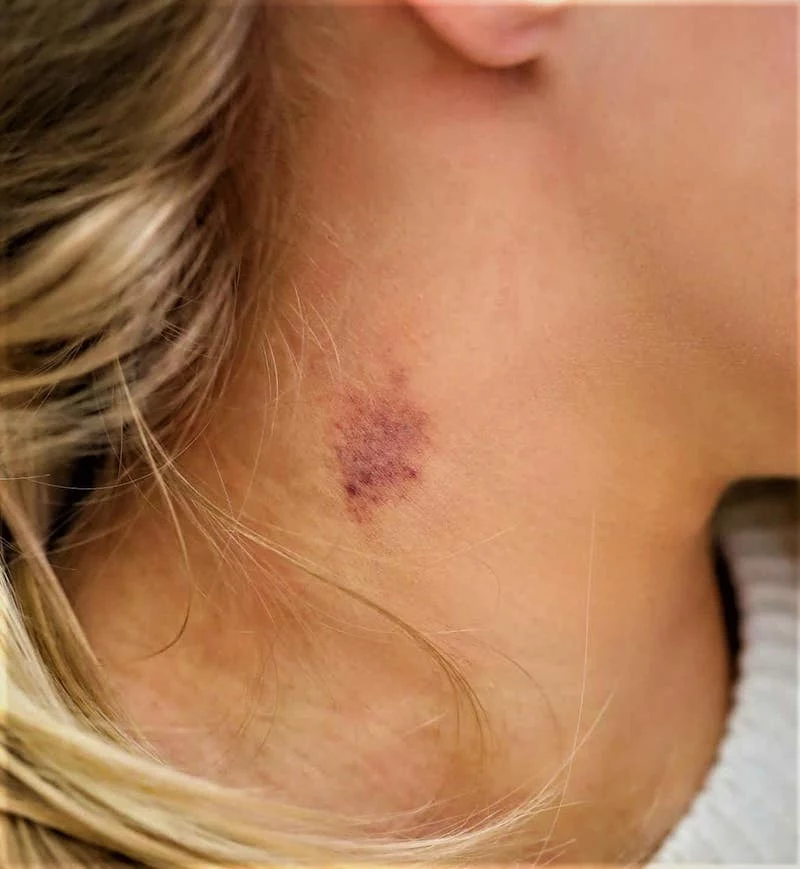
So, What Exactly IS a Hickey?
To fix the problem, it helps to know what you’re dealing with. A hickey is simply a bruise caused by suction. That pressure breaks tiny blood vessels right under your skin, and the blood that pools there creates that tell-tale mark. The skin on your neck is super thin, which is why they show up so easily there.
Ever wonder why it changes color? That’s your body doing its cleanup job. It goes through a predictable color cycle as it breaks down the trapped blood:
- It starts off red or pink because the blood is fresh and full of oxygen.
- Within a day or two, it turns dark blue or purple as the oxygen disappears. This is usually when it looks the most dramatic.
- Next up is green. This happens when your body starts breaking down hemoglobin (the stuff in red blood cells) into a compound called biliverdin.
- Finally, it fades to a yellowish-brown as it breaks down even further into bilirubin. Soon after, it’s gone.
Without any help, this whole show can take from one to two weeks. But with the right strategy, you can cut that time down. Look, this isn’t magic, but being diligent with these tips can often turn a very noticeable 7-day bruise into a faint 4-day smudge—which is a huge win when you have somewhere to be.
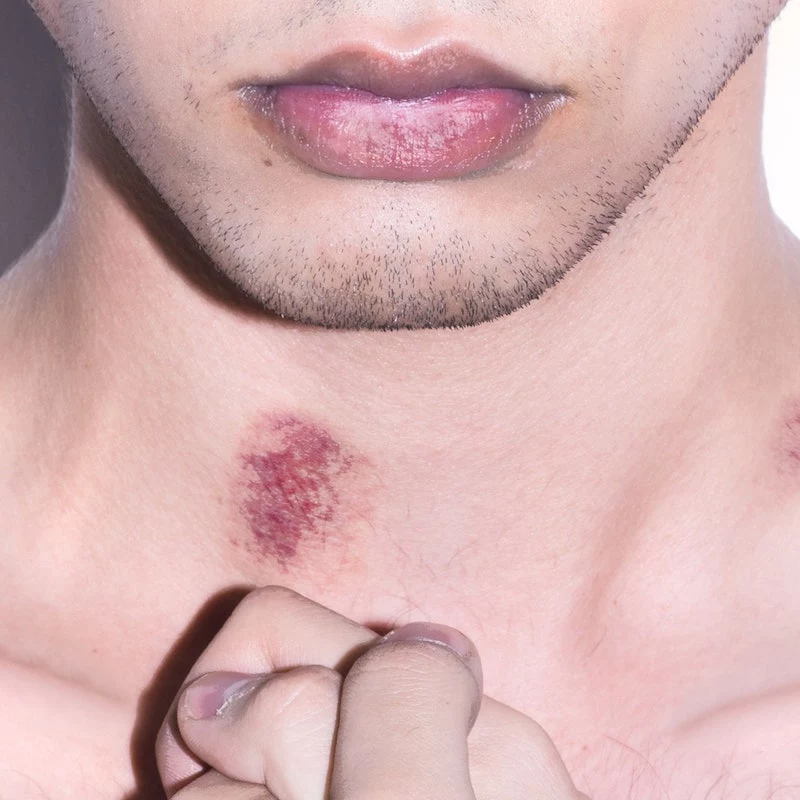
The First 48 Hours: Your Cold Therapy Window
The most important thing you can do happens right at the beginning. For the first two days, your mission is damage control. You need to slow down the bleeding under the skin, and the best way to do that is with cold.
Cold makes your blood vessels constrict (get narrower), which means less blood can leak out. This results in a smaller, lighter bruise that will heal faster. A heads up: using a cold compress after the 48-hour mark won’t do much because the internal bleeding has already stopped.
My favorite tools for the job are pretty simple:
- The Cold Spoon: A classic for a reason. Pop a couple of metal spoons in the freezer for 15 minutes. The metal holds the cold well, but they warm up fast, so having a backup is key.
- Frozen Peas: Honestly, a bag of frozen peas or corn is my top pick. It molds perfectly to the curve of your neck, providing even cold distribution.
- Gel Packs: If you have one, a reusable gel pack is fantastic. They stay cold for ages and are nice and flexible.
Just remember the golden rule: apply for 15 minutes, then take a 20-minute break. This prevents any skin damage from the cold itself. Repeat this as often as you can for the first two days.
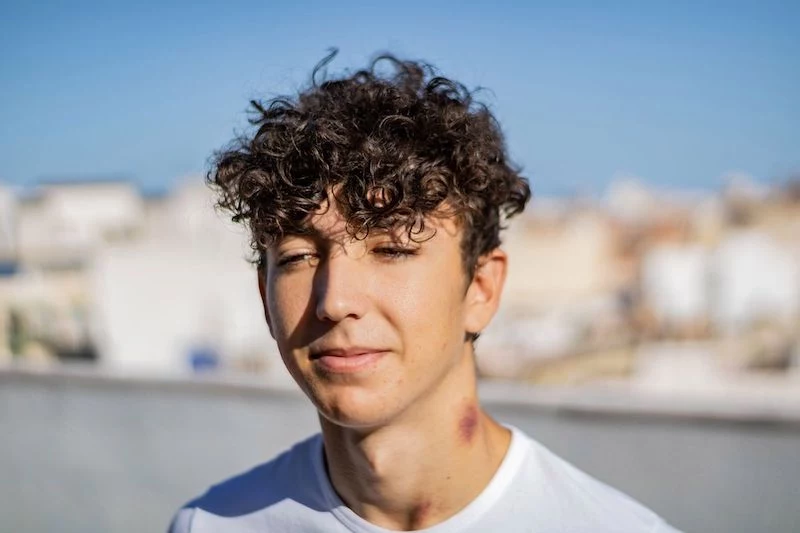
After 48 Hours: Time to Bring in the Heat
Okay, two days have passed. The internal bleeding is done. Now, your goal switches from damage control to cleanup. You want to increase circulation to the area to help your body flush away the trapped blood.
This is where warmth comes in. Heat does the opposite of cold—it widens the blood vessels, bringing fresh, oxygen-rich blood to the area to speed up healing. A common mistake is applying heat too early; it will just make the bruise worse!
Soak a washcloth in warm (not hot!) water, wring it out, and hold it on the hickey for 10-15 minutes a few times a day. After a few minutes of warmth, you can try an optional gentle massage. Use your fingertips to slowly press and move the skin around the edges of the bruise. Don’t rub the surface; you’re trying to encourage the fluid underneath to move away. If it hurts at all, stop.
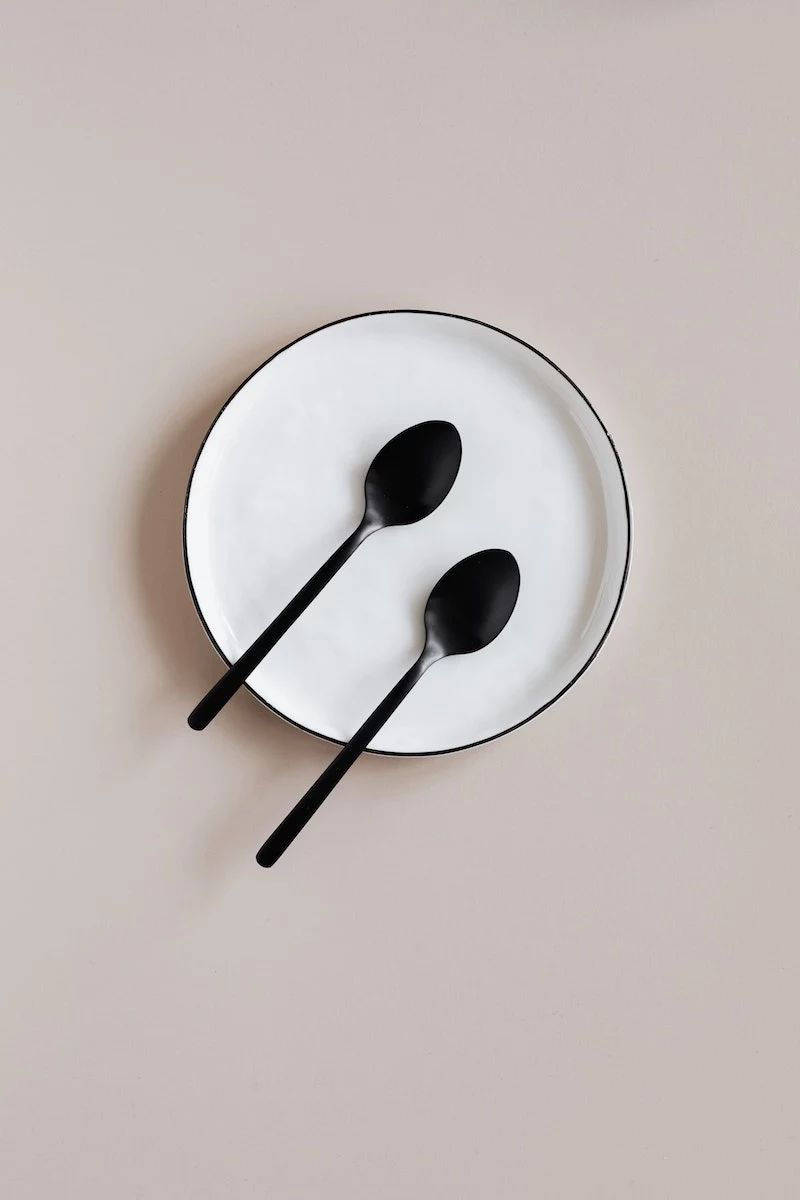
Topical Treatments: The Good, The Bad, and The Useless
The drugstore aisle can be confusing. There are tons of creams claiming to be miracle bruise-erasers. From my experience, some are genuinely helpful, while others are just wishful thinking. Here’s my honest breakdown.
Treatments That Genuinely Help:
- Arnica Cream: This is my go-to recommendation. Arnica is an herb with anti-inflammatory properties that many people (myself included) find really helps with bruising and swelling. It’s not a miracle, but it can help. Quick Tip: Look for a common brand like Boiron Arnicare gel. You can find it at almost any drugstore or on Amazon for about $8-$12. Apply it 2-3 times a day.
- Vitamin K Cream: This is another solid option. Vitamin K is essential for blood clotting, and pros often use the cream to help minimize bruising after cosmetic procedures. It helps your body reabsorb the pooled blood. It can be a little harder to find than Arnica, but it’s very effective.
Things That Are Harmless But Ineffective:

- Aloe Vera: Great for soothing irritated skin, but it won’t do much for the actual bruise underneath. It feels nice, but don’t expect it to speed up healing.
- Banana Peels & Pineapple: These are popular folk remedies that just don’t work. The idea is that enzymes or antioxidants will heal the bruise, but they simply can’t penetrate the skin to do any good. Save the fruit for a smoothie.
Treatments You Should NEVER, EVER Use:
Please, for the love of your skin, avoid these internet “hacks.” They can cause way more harm than good.
- Toothpaste: This is the worst offender. It’s full of harsh abrasives and irritants that can cause chemical burns and rashes. You’ll just trade a fading bruise for a painful, scabby red mark.
- Peppermint Oil: People think the tingling means it’s working, but it’s usually just irritation. Undiluted essential oils can burn sensitive neck skin.
- Hard Brushing: The idea of “breaking up” the bruise with a toothbrush is terrible advice. You’ll just damage more capillaries, make the bruise worse, and scrape your skin raw.
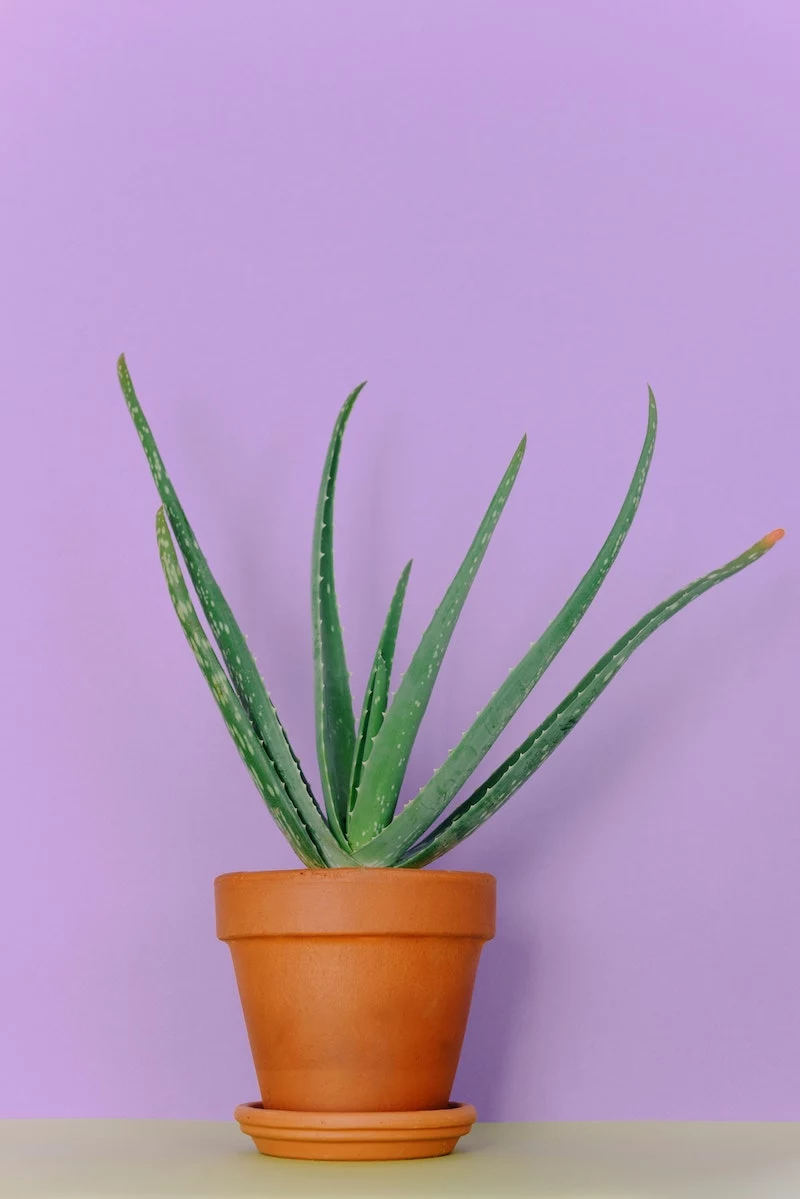
When All Else Fails: How to Conceal It Like a Pro
Sometimes, you just need to hide it, and that’s where a little makeup artistry comes in. The secret isn’t to pile on thick concealer; it’s to use color theory to neutralize the discoloration.
You don’t need expensive makeup for this. A simple, affordable color-correcting palette is your best friend. Brands like NYX or L.A. Girl sell fantastic ones for under $15 at the drugstore or online.
- Prime the Area: Start with clean, moisturized skin and a dab of makeup primer. This helps the makeup stick and not look cakey.
- Color Correct: This is the magic step. Look at your bruise and use the opposite color to cancel it out. For a fresh red/purple mark, use a green corrector. For a darker blue one, use a peach or orange corrector. Gently pat a thin layer on—don’t rub.
- Conceal: Now, tap a creamy concealer that matches your skin tone perfectly over the top. Blend the edges into your skin so there are no harsh lines.
- Set It: Lightly dust the area with a translucent setting powder to lock it all in place.
And if you’re not feeling the makeup, there’s no shame in the classic turtleneck or a stylish scarf. They’ve been saving the day for ages.

Quick Safety Note: When to See a Doctor
Heads up, this is super rare, but it’s always good to be informed. A hickey is almost always harmless, but you should check in with a doctor if you’re getting lots of unexplained bruises, if a bruise is extremely painful, or if it doesn’t show any signs of fading after a week or two. It’s always better to be safe!
Inspirational Gallery
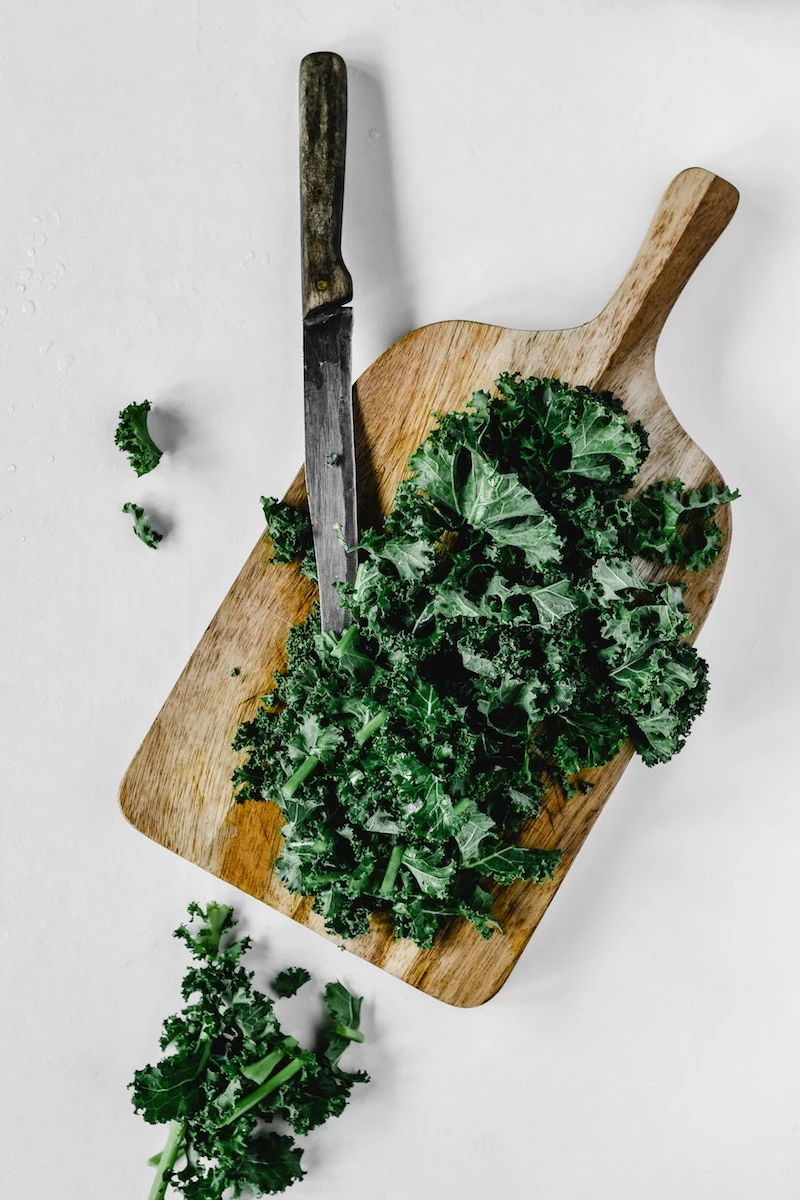
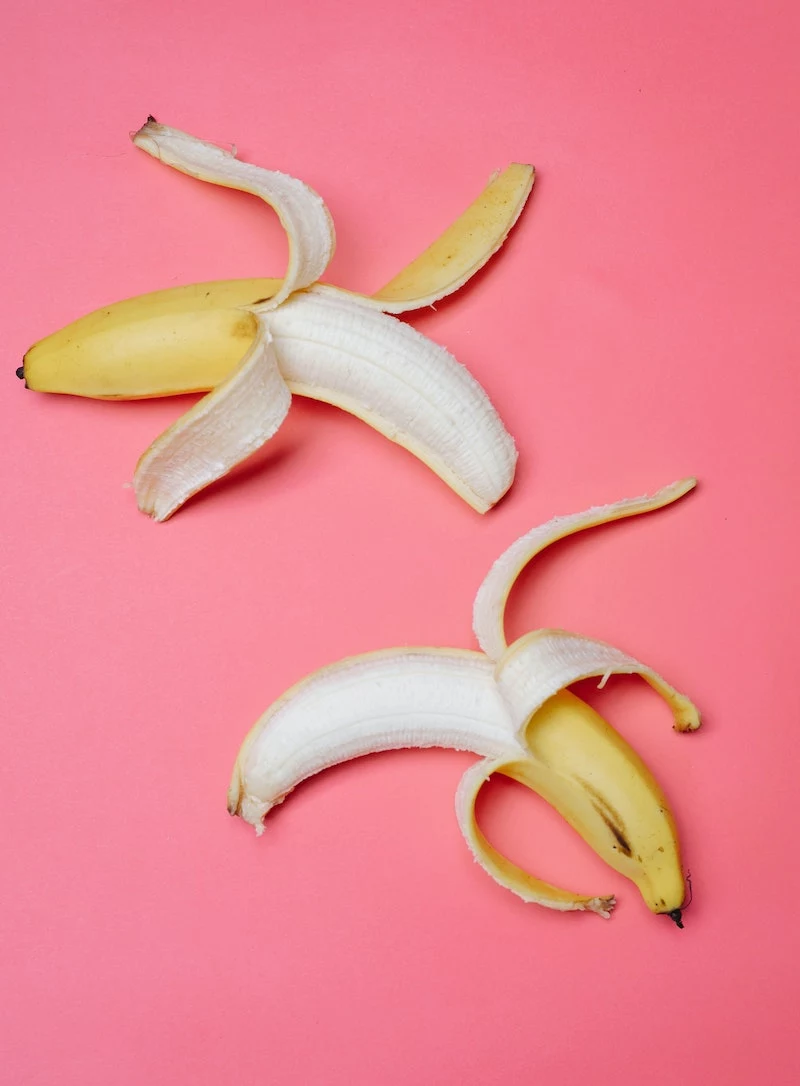
When concealer is your last line of defense, color theory is your best friend. Don’t just cake on a foundation that matches your skin. Instead, neutralize the hickey’s color first.
- For a fresh, red/pink mark: Use a green-toned color corrector. Green cancels out red.
- For a darker, blue/purple mark: A yellow or peach-toned concealer will counteract the blue hues. NYX’s Color Correcting Palette is a great, affordable all-in-one for this.
- For a fading, yellowish/green mark: A lavender or pink-toned corrector can brighten the dull area before you apply your final skin-tone concealer.

The skin on your neck is, on average, only about 0.05 inches thick, making it one of the most delicate areas of your body and highly susceptible to bruising from minimal pressure.
This thinness is why hickeys appear so vibrant and why aggressive treatments can do more harm than good. Gentle, consistent care is far more effective than trying to scrub it away. Patience isn’t just a virtue; it’s a practical necessity.
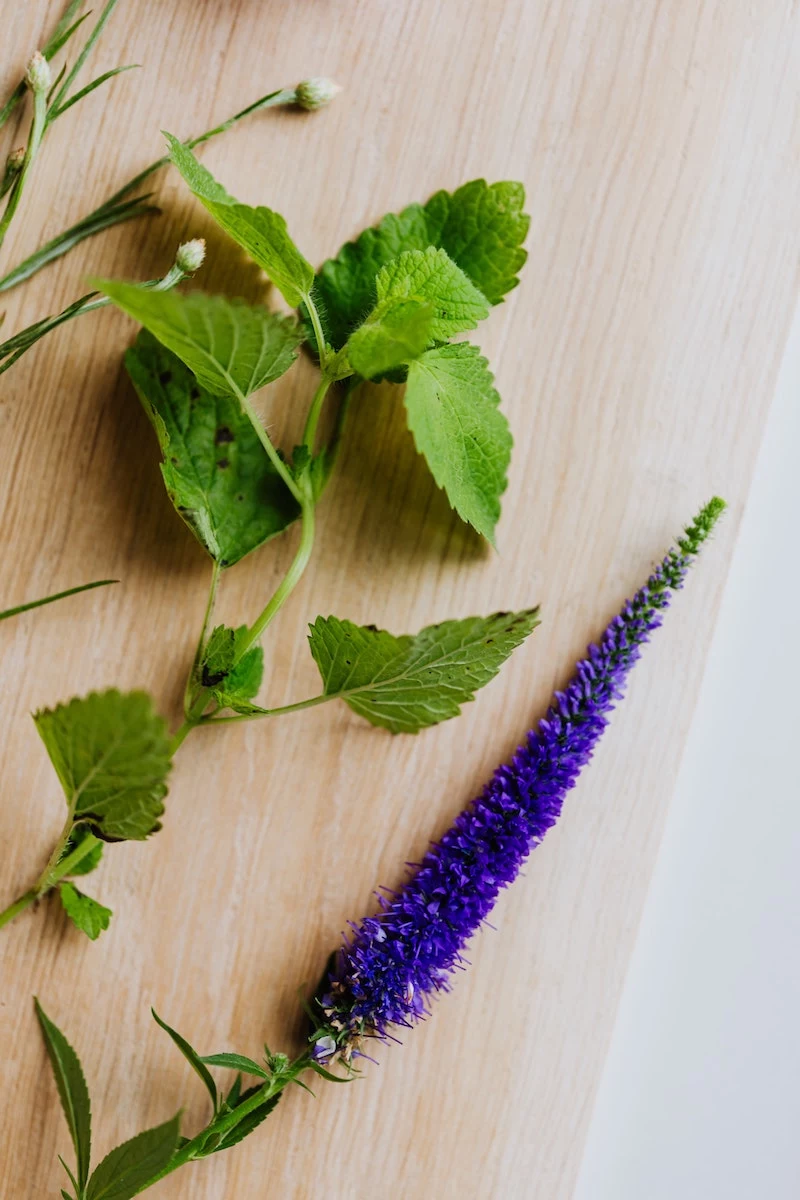
- Speeds up the breakdown of trapped blood.
- Reduces swelling and inflammation.
- Often feels incredibly soothing on irritated skin.
The secret? A topical arnica gel. This homeopathic remedy, derived from the arnica montana flower, is a trusted ally for athletes dealing with bruises and can be a game-changer for a hickey. Apply a thin layer of a product like Boiron’s Arnicare Gel 2-3 times a day.
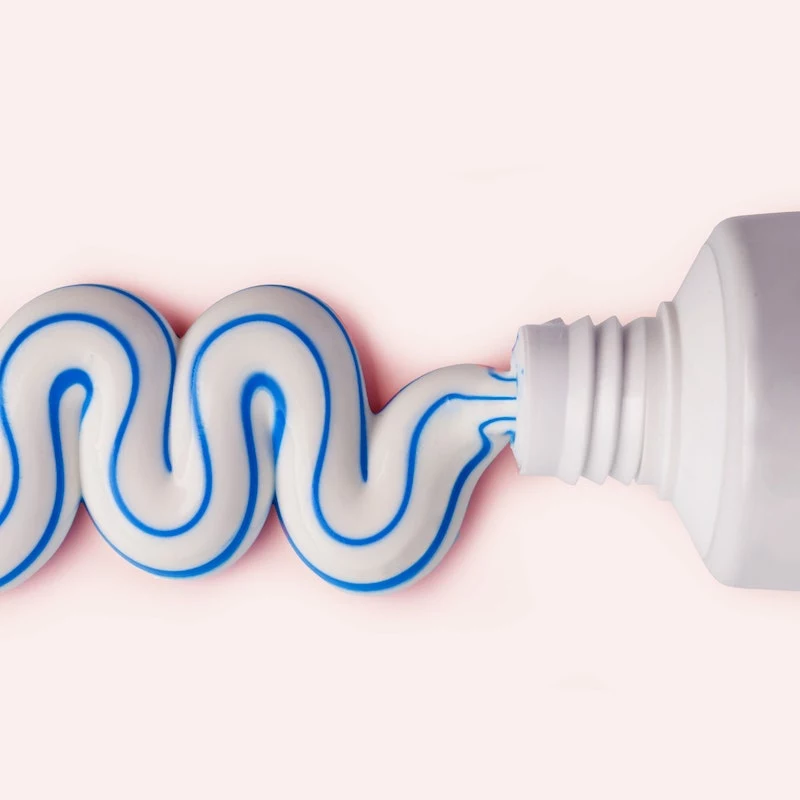
Important point: The cold compress is a first-response tool, best used within the first 24-48 hours. Its job is to constrict blood vessels to minimize the initial bruising. After two days, it’s time to switch tactics. A warm compress (like a washcloth soaked in warm water) will now help increase blood flow to the area, encouraging your body to clear away the trapped blood more quickly. Think of it as opening the roads after the initial accident has been contained.
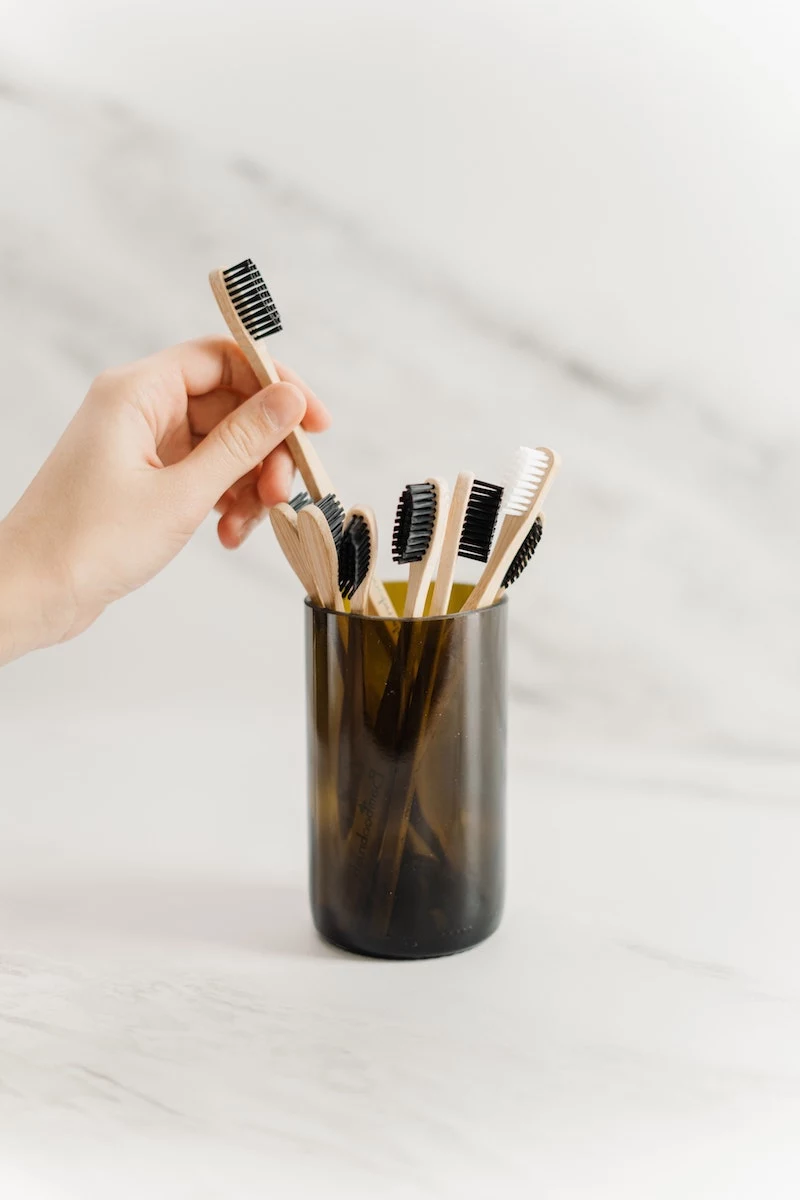
Can that weird banana peel trick actually work?
Honestly, not really. While the inside of a banana peel is rich in nutrients and antioxidants, it’s unlikely to have a significant or rapid effect on a deep bruise like a hickey. You might get a minor soothing or moisturizing benefit, but you’ll see much faster results from proven methods like applying arnica or Vitamin K cream. Save the bananas for your morning smoothie.
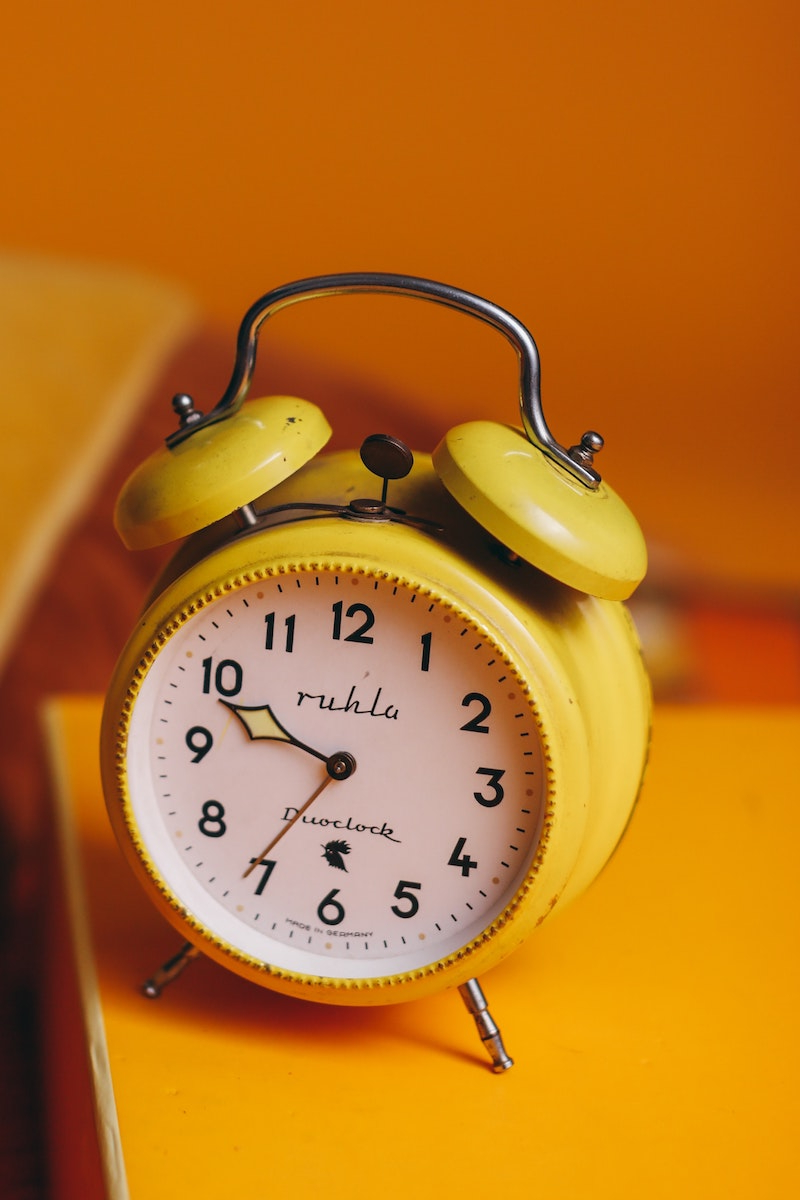
Don’t make a bad situation worse. Some popular ‘hacks’ can irritate the delicate skin on your neck, potentially causing redness or abrasion that’s even harder to cover up than the original hickey.
- Avoid aggressive rubbing with a coin or toothbrush. This can break more capillaries and worsen the bruise.
- Steer clear of applying pure toothpaste, especially whitening formulas. The ingredients can be too harsh and may cause a chemical burn or rash.
- Never apply undiluted essential oils, like peppermint, directly to the skin. Always mix them with a carrier oil first.
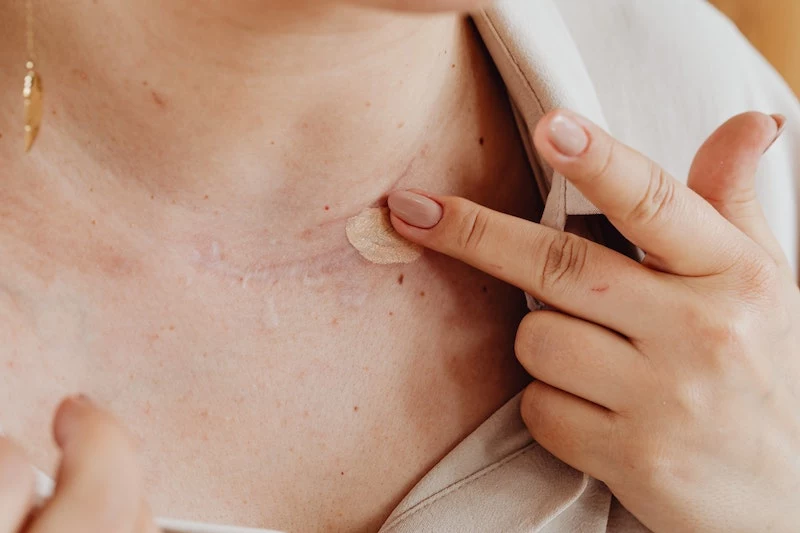
One of the most effective topical ingredients for fading bruises is Vitamin K. This vitamin is essential for blood clotting and can help your body reabsorb the pooled blood more efficiently. Look for a dedicated Vitamin K cream, like Dermal-K, and gently massage a small amount onto the hickey twice a day after the initial cold-compress phase.
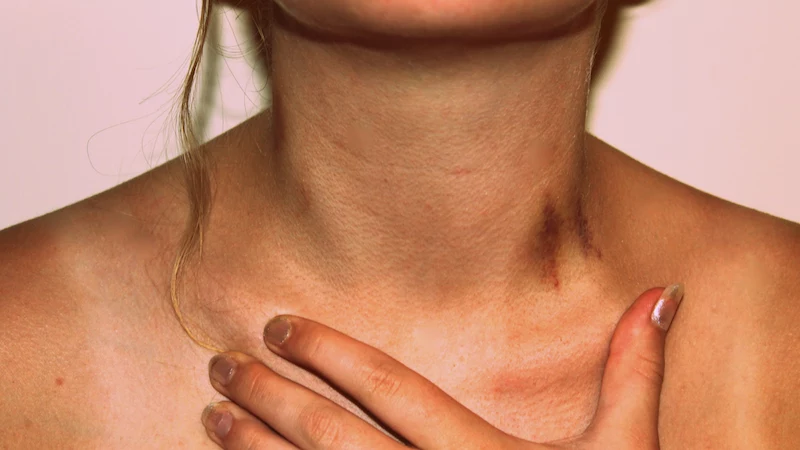
Be mindful of what you’re taking. Common over-the-counter pain relievers like aspirin and ibuprofen are anti-platelet agents, which can interfere with blood clotting and potentially make a bruise look darker or last longer.
Aloe Vera Gel: A well-known skin soother, pure aloe vera gel has anti-inflammatory properties that can calm the skin and may help the healing process. It feels cool and refreshing on the site.
Cooled Tea Bag: A cooled, damp black or green tea bag works as a gentle compress. Tea is rich in tannins, which can help constrict blood vessels and reduce swelling. It’s an easy, budget-friendly option using something you already have in the kitchen.
For a quick, soothing treatment, aloe is great. For a classic, low-cost compress, tea bags are a solid choice.










